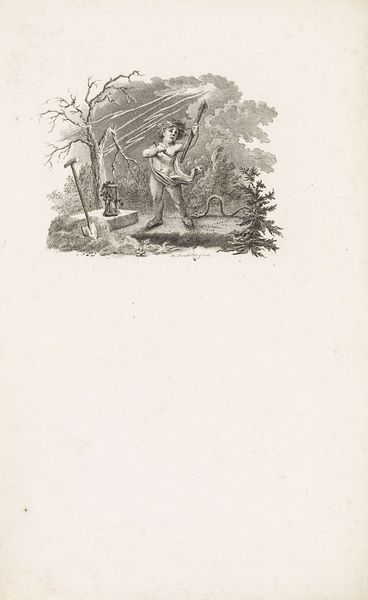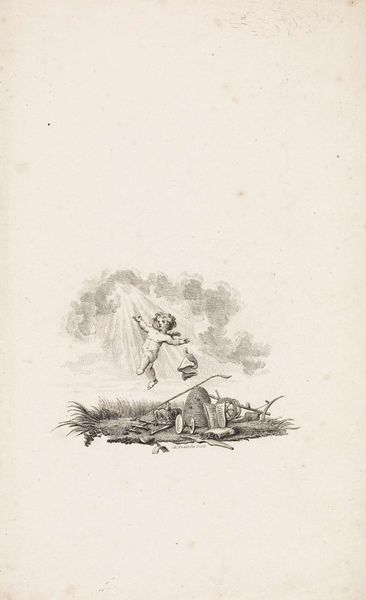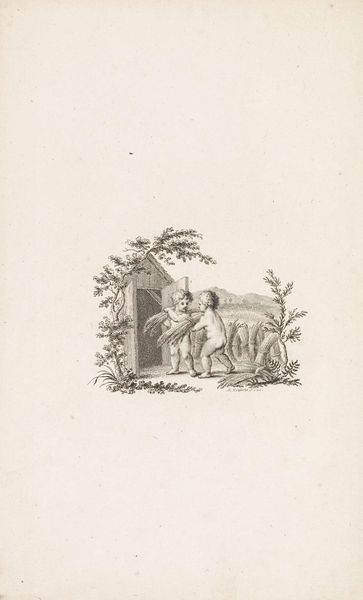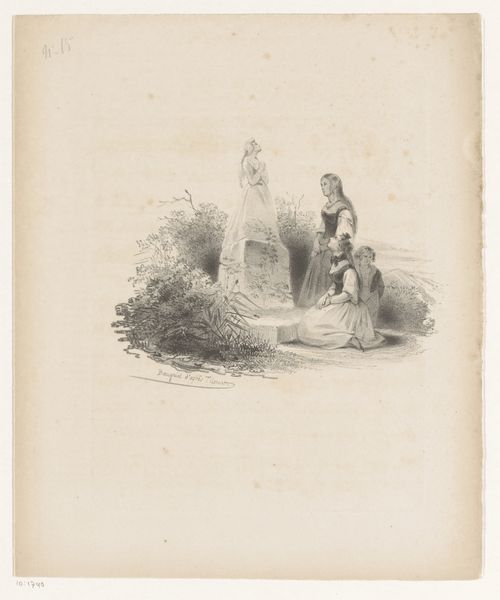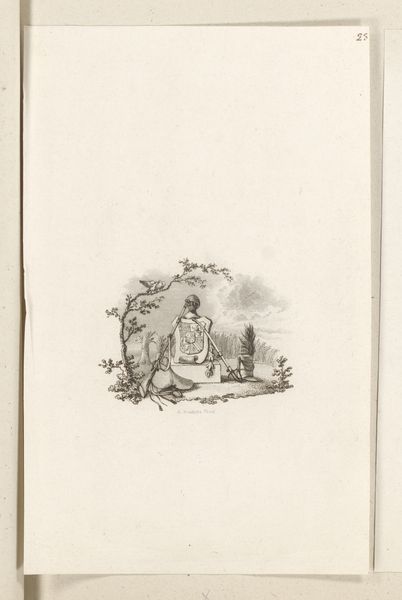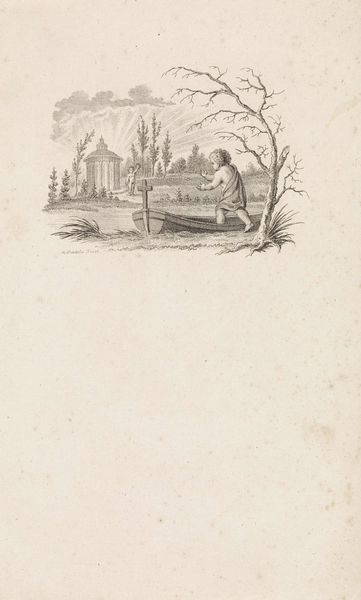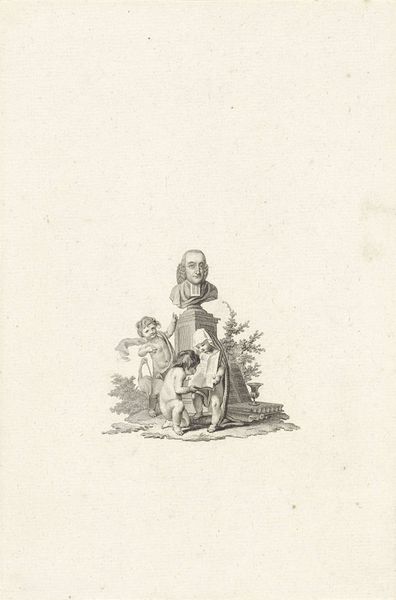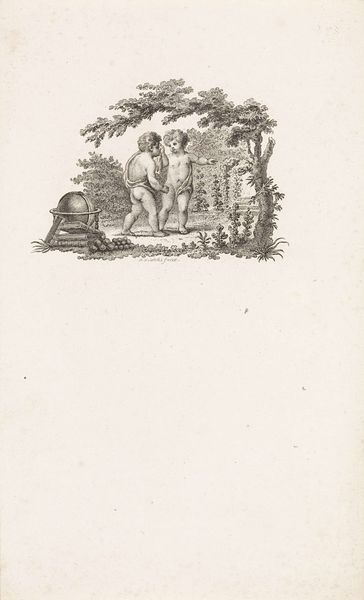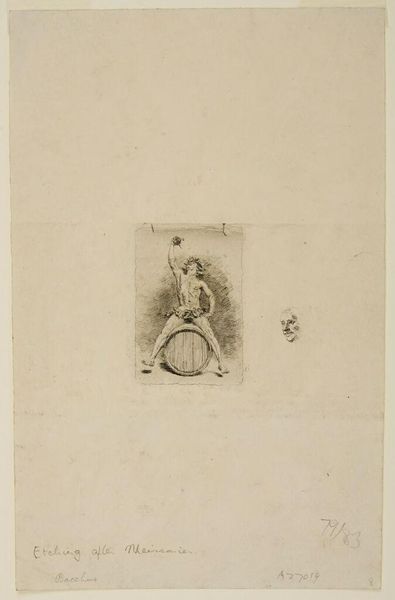
Putto bekijkt een pijl in de roos van een schietschijf 1751 - 1816
0:00
0:00
drawing, pencil
#
pencil drawn
#
drawing
#
neoclacissism
#
pencil sketch
#
landscape
#
pen-ink sketch
#
pencil
#
sketchbook drawing
#
pencil work
#
genre-painting
Dimensions: height 219 mm, width 136 mm
Copyright: Rijks Museum: Open Domain
This print, made by Reinier Vinkeles, likely dates to the late 18th or early 19th century. It’s made from an engraved metal plate, probably copper, which would have been carefully incised with tools called burins and needles. Look closely and you can see the subtle gradations of tone, achieved by varying the density of lines. This was a highly skilled process, requiring years of training. Prints like this were popular at the time, a form of reproduction that disseminated imagery widely and relatively inexpensively. The labor involved in creating such a detailed image would have been considerable, making it a valuable commodity in a society increasingly driven by trade and consumption. Engravings were not considered "fine art" in the traditional sense, but rather a craft, a distinction that overlooks the artistry and expertise required to produce them. So next time you come across a print, consider the labor and skill behind its creation, and the role it played in shaping visual culture.
Comments
No comments
Be the first to comment and join the conversation on the ultimate creative platform.
